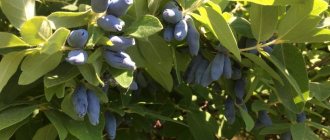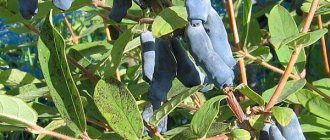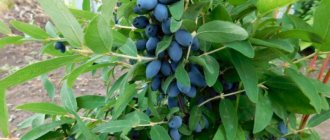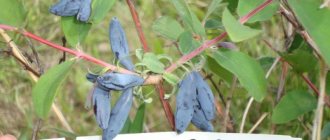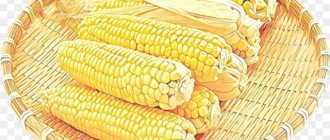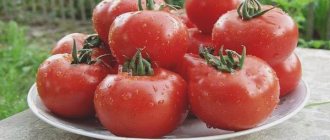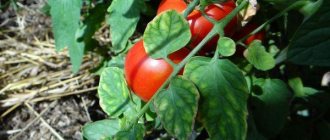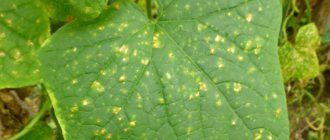Description of the honeysuckle variety
This variety has become a real find for gardeners due to its versatility. It combines decorative and fruit-bearing properties.
The bright appearance perfectly complements the garden plot. The berries are used for culinary and medicinal purposes.
Origin and development, history of breeding
The variety was bred by employees of the Bakcharsky stronghold of northern gardening, which is located in the Tomsk region. It was obtained in 1972 by crossing Kamchatka honeysuckle and Turchaninov honeysuckle. The Siberian was added to the State Register in 2000.
Characteristics, description of appearance, taste
Bushes of medium height - approximately 160 cm. The crown is spherical, of medium density. The skeletal branches are brownish-brown in color, the side shoots are spread wide to the sides. Young branches are red.
The apical bud is oval in shape. The leaves are medium-sized with a heart-shaped or rounded base, light green.
Inflorescences are reduced, two-flowered. This variety of honeysuckle produces medium-sized, pale yellow flowers. Their petals are half-closed.
The fruits are quite large, aromatic and sweet, and have a dark purple color. Their length varies from 2 to 2.5 cm. The shape is teardrop-shaped and elongated. The pulp is tender and juicy.
Experts highly appreciate the taste. The tasting rating of the berries is 4.9 out of 5 points.
Features of the use of this variety
The variety is grown both as an ornamental plant and for harvest.
Berries are used in fresh and processed forms. Juices, compotes, jams, preserves, etc. are prepared from them.
Productivity and fruiting
Siberian honeysuckle bears fruit for the first time in the second or third year after planting. The berries ripen at the same time, so the harvest is carried out once.
In the first year of fruiting, 500 g of fruits are collected from the bush. At the age of ten, the crop produces about 3.5 kg of berries per bush. The highest yield occurs in the 14th year after planting. At this time, the plant produces about 4.5 kg of fruit. On average, 3.7-4 kg are collected from each bush.
Ripening period
Honeysuckle Sibiryachka is an early variety. The berries ripen in early or mid-June.
Resistance to diseases and pests
Pests rarely attack this variety. Also, Siberian practically does not get sick. Fungal infections are possible only with excessive watering.
Resistance to cold and drought
This is a frost-resistant variety that can withstand temperatures down to -50 degrees. Flowers are not harmed by returning spring frosts down to -7°C.
The variety also tolerates drought well.
For which regions is it best suited and what are the climate requirements?
Siberian is suitable for cultivation throughout Russia. The variety is frost and drought resistant. Gives abundant harvests in different climatic zones.
Productivity
The first ripe fruits appear in the first days of summer. The yield of a bush depends on its age. Young plants produce no more than 0.5 kg of berries, the yield of adult bushes (10 years old and older) is about 4 kg.
Reference. The average lifespan of a bush is from 20 to 40 years.
Fruit shedding is weak, which allows you to collect most of the berries. If the bushes are planted in a draft, the percentage of fallen berries increases. Fruiting is annual and amicable, the bushes do not rest.
The main advantages and disadvantages of the variety
The main advantages of Siberian honeysuckle:
- stable annual fruiting;
- precociousness;
- high yields;
- good taste;
- large fruit;
- high resistance to frost.
Main disadvantages:
- average transportability;
- difficult harvesting due to curved branches;
- slight crumbling during ripening.
What is the difference from other varieties and hybrids
The Sibiryachka variety is suitable for growing in difficult climatic conditions. At the same time, the taste of the berries is very high.
Methods of reproduction and pollination
The Sibiryachka variety can be propagated by seeds and cuttings. For amateurs, the second breeding option is more suitable. The seed method is used by experienced breeders. Strong annual shoots, which are harvested during the initial period of fruiting, are suitable for cuttings. To begin with, you can buy a ready-made seedling from a specialized nursery.
Signs of a healthy seedling:
- absence of any mechanical damage;
- flexible, unbreakable shoots;
- absence of too long roots and branches.
Siberian is self-sterile, so you need to have several varieties in the garden for cross-pollination:
- Sorceress;
- Tomsk;
- Kamchadalka.
Agricultural technology
Agrotechnical measures come down to the correct choice of planting site, planting itself and care. Care consists of regular watering, fertilizing and periodic pruning.
Choosing a place in the garden and preparing holes
For planting honeysuckle, they try to choose the following areas:
- not blown by strong winds;
- most of them are illuminated by the sun.
In bushes planted in partial shade or shade, the shoots begin to lengthen, which is why few flower buds are formed.
Important. If the Sibiryachka variety is grown in windy areas, then in a strong wind all the ripe berries fall from the bush.
The depth and diameter of the holes should be approximately 40 cm. Add 1 bucket of organic fertilizer (compost, peat or humus) and 50 g of phosphorus and potassium fertilizers to each planting hole.
Preparing for landing
Siberian honeysuckle seedlings must not be pruned before planting. Because of this procedure, young plants do not take root well.
Also, before the procedure, some gardeners soak the roots of seedlings in a root formation stimulator for several hours. This contributes to faster survival and accelerated development of the root system.
Soil requirements
It is desirable that the soil be loamy and moderately moist. Acidic and swampy soils reduce crop yields.
Dates, scheme and rules of planting
The optimal time for planting is considered to be autumn, about 3 weeks before the arrival of frost.
Boarding procedure:
- Immediately before planting, pour a bucket of water into the planting hole and wait until it is completely absorbed.
- A mound of soil is formed in the center of the hole and a seedling is placed on it.
- The roots are carefully spread over the mound.
- The hole is filled in and the earth is compacted.
- After planting, the tree trunk circle is watered with a bucket of water and mulched. Peat or humus is used for mulch.
Attention. The distance between individual bushes should be 2-3 m.
Features of cultivation
Young seedlings will quickly take root in a new place. The main thing is to provide them with proper care.
Nuances of care
Watering is carried out regularly. As soon as the soil around the trunk dries 20 cm deep, the plant is watered with a bucket of water. It is advisable to spray the bush with additional water. The next day after watering or rain, the tree trunk circle is loosened. This is required so that oxygen gets to the root system.
It is also important to feed honeysuckle on time. Fertilizers are applied for the first time during planting. This is enough for the first 2 years.
After 2 years, they begin to regularly feed the crop:
- in the spring add 1 tbsp. l. urea for 1 bucket of water for each bush;
- in summer, pour a bucket of organic fertilizer into the tree trunk circle;
- in the fall, feed with ash (1 liter jar per plant).
The crop is prone to thickening, so it is important to trim:
- For the first 6-8 years, only sanitary pruning is performed. Only cut off weak, dried, damaged branches, as well as those that grow inside the bush or downwards.
- A few years after the start of fruiting, thickened plants begin to be thinned out. Most of the old branches over 8 years old are cut out. Replacement shoots will appear from their stumps. This pruning is performed once every 3 years.
- By about 20 years, the bush practically stops producing crops. In this case, anti-aging pruning is carried out. In the fall, all skeletal branches are cut off, leaving 15 cm stumps. Next season, young shoots will begin to grow on them. The bush will recover in a year. This procedure helps to extend the fruiting period by about 5-10 years.
Pollinators
The Sibiryachka variety is sterile, so pollinators are required to obtain a harvest. For pollination, choose any Siberian, Altai or Kamchatka variety of honeysuckle, for example, Kamchadalka or Volshebnitsa. A bush of another variety is planted 2-3 m from Sibiryachka.
Disease and pest control
The Siberian is almost not susceptible to diseases and pest attacks, but this still happens sometimes. Among the most common parasites and diseases are:
- Honeysuckle aphid. When it appears, the leaves on the bush curl and quickly turn yellow or become covered with dark spots. This pest slows down the development of the bush, and in some cases causes the death of the plant. To combat aphids, the drugs “Rogora”, “Aktellik”, “Confidor” or “Aktara” are used.
- Honeysuckle mite . The presence of the parasite is signaled by brown, shapeless spots on the leaves, as well as the appearance of gray fungi. Affected leaves fall off. To eliminate the pest, use the drug “Aktellik”, “Mavrika” or “Rotor”.
- Fungal diseases (ramularia, cercospora, powdery mildew) . Most often they occur when the soil is waterlogged. For treatment, the bushes are sprayed with a solution of the drug “Topaz” or “Fundazol”.
Preparing for winter
The Siberian fish tolerates frost well, so it does not require special preparation for the winter season. The bushes are only mulched with peat or humus before the arrival of frost.
Reproduction
Most often, honeysuckle is propagated by cuttings or dividing the bush.
Dividing the bush
In early spring or autumn, young bushes (3-5 years old) are dug up and divided along skeletal branches that have their own roots. After this they are seated.
Propagation by cuttings
At the beginning of July, the strongest annual shoots are selected and cut off, including old wood. They are kept in a root formation stimulator, after which they are planted in a moist and loose substrate consisting of compost, peat and sand. The plants are covered with film to create a greenhouse. The film is removed every day for ventilation. By autumn, the seedling will be ready for planting in a permanent place.
A SIMPLE WAY TO PROPAGATE HONEYSUCKLE. ENOUGH…
Planting and care
The most favorable time for planting is from late August to mid-September, since honeysuckle is highly resistant to low temperatures.
To place berry bushes, you must choose a well-lit, sunny area. The plant is grown using cuttings and seeds.
Before purchasing young seedlings, it is necessary to inspect the honeysuckle and not purchase bushes that have dry branches or long roots. The bark on the shoots should not have any defects, such as peeling areas. The Siberian will die after replanting if there are dark spots on the rhizome and branches, indicating fungal damage.
On loamy soil, honeysuckle bears fruit abundantly; in partial shade the plant will not dry out, but the harvest will be small. Dry lands and low depressions in which water stagnates are unsuitable for planting.
Strong winds have a negative effect on the formation of flowers and ovaries. Honeysuckle is demanding on soil composition, oxygen supply, and loves fertile lands. Bushes should not be planted on clay soils; in this case, pale green leaves and short annual growth will appear on the branches.
Before planting, organic fertilizers are added to poor soil (5 kg per 1 m²). To obtain a large harvest, gardeners use several shrubs of different varieties. The distance between them should not exceed 2 m. In the first 4 years, the bushes grow slowly; the period of abundant fruiting for honeysuckle begins 6-8 years after planting.
The Sibiryachka variety is undemanding to care. The plant loves moisture; the bushes need to be watered often in hot weather. The crown should be sprayed with warm, settled liquid. This procedure is carried out before laying the eyes. In early spring, the gardener applies nitrogen fertilizers to the bush.
In late autumn, the plant needs fertilizing containing potassium and phosphorus. The slow growth of honeysuckle in the first 4 years requires constant loosening of the top layer of soil after abundant watering. The space next to the roots is mulched with humus or peat.
Adult honeysuckle bushes are characterized by peeling of the bark as a result of aging and death of shoots. The plant needs to remove dry branches in the fall (after leaf fall) or early spring.
Berry bushes older than 7 years require sanitary pruning. Broken, dry shoots are removed from the plant. First of all, the branches of the lower tier are cut off, because shoots lie on the surface of the soil, interfere with care, and do not bear fruit. In adult bushes, the crown is thinned out every 3 years, leaving only 5 powerful branches.
The tips of the shoots of honeysuckle should not be removed, since they contain a large number of flower buds. Old bushes are pruned at a height of 0.3-0.4 m from the ground surface. The plant will begin to recover in the spring, and the first shoots will grow on the stumps.
.ud3d7db604e6031916ec6b80fc90626d5 , .ud3d7db604e6031916ec6b80fc90626d5 .postImageUrl , .ud3d7db604e6031916ec6b80fc90626d5 .centered-text-area .ud 3d7db604e6031916ec6b80fc90626d5 , .ud3d7db604e6031916ec6b80fc90626d5:hover , .ud3d7db604e6031916ec6b80fc90626d5:visited , .ud3d7db604e6031 916ec6b80fc90626d5:active .ud3d7db604e6031916ec6b80fc90626d5 .clearfix:after .ud3d7db604e6031916ec6b80fc90626d5 .ud3d7db604e6031916ec6b80fc90626d5: active , .ud3d7db604e6031916ec6b80fc90626d5:hover .ud3d7db604e6031916ec6b80fc90626d5 .centered-text-area .ud3d7db604e6031916ec6b80fc90626d5 .ctaText .ud3d7db604e6031916ec6b80fc90626d5 .postTitle .ud 3d7db604e6031916ec6b80fc90626d5 .ctaButton .ud3d7db604e6031916ec6b80fc90626d5:hover .ctaButton .ud3d7db604e6031916ec6b80fc90626d5 .centered-text .ud3d7db 604e6031916ec6b80fc90626d5 .ud3d7db604e6031916ec6b80fc90626d5-content .ud3d7db604e6031916ec6b80fc90626d5:after We recommend that you read Honeysuckle Bakhchisarai giant
Harvesting
Harvesting is carried out at technical ripeness. It occurs a month after the end of flowering.
How and when to collect
The harvest is harvested in June. Remove the berries by hand. It is not advisable to shake them off, since the Siberian fruits have a very thin skin, which is damaged when dropped.
Types of varieties according to crumbling properties
The berries of many varieties of honeysuckle fall off easily, so you can lose part of the harvest if you do not start picking it in time. So that you do not have to deal with crop loss, you can take into account the crumbling criterion in advance.
Shatter-resistant varieties
If you can’t constantly be on the site and harvest on time, you should choose varieties that are resistant to berry shedding. These include:
- Souvenir. Medium-sized variety with a thick crown. Annual shoots are covered with small fluff. The berries are large, cylindrical. The pulp is sweet and sour, there is no aroma. The fruits ripen at the end of June. From one bush you get up to 2.2 kg.
- The highlight. Medium-sized variety with a slightly spreading crown. The yield is average - up to 1.5 kg. The fruits are elongated, oval with a sweet and sour taste. Sucking insects can settle on the bushes.
- Swan. The variety is easy to recognize by the characteristic shape of the fruits - they always have a pointed base. The fruits themselves are barrel-shaped and elongated in length. Ripens from June 15. The fruits tolerate transportation well over long distances due to their dense and thick skin. It is difficult to separate the berry from the stalk. Productivity ranges from 1.5 kg.
variety Souvenir
Variety Izyuminka
Lebedushka variety
Among the previously presented varieties resistant to shedding are:
- Amphora;
- Malvina;
- Altair;
- Kingfisher;
- Kamchadalka;
- Moraine;
- Moskovskaya-23;
- Leningrad giant;
- Blue bird;
- Gerda;
- Volkhova.
Varieties with shedding fruits
In such varieties, the fruits easily break off and fall off, so it is extremely important to start harvesting on time. These are the varieties:
- Blue spindle;
- Roxana;
- Cinderella;
- Bakchar giant;
- Nymph;
- Long-fruited;
- Siberian;
- Tomsk
The medium-sized Pavlovskaya variety also has high shedding. At the same time, the plant is resistant to secondary flowering and bears fruit with large berries with a pointed tip. The taste is dessert, sweet and sour. Productivity – 2 kg.
What difficulties may there be when growing
There is a chance of re-blooming if the autumn is too warm. The bushes bloom when the temperature first briefly drops to below zero, and then a thaw comes. Subsequent cooling will lead to the death of the buds, which will greatly reduce the harvest next year.
If this happens, the buds are immediately removed. This will minimize damage from re-blooming. In early spring, damaged branches are cut off from bushes to stimulate the appearance of new shoots.
Diseases and pests
During the cultivation of the crop, no scab damage was observed. This is a huge advantage: Siberian pears are grown everywhere, in conditions of high humidity and changeable weather. There are enough preventive measures that will help maintain the immunity of the pear.
Dangerous Pear Pests
Pears often suffer from pests, they affect the leaves, bark and fruits.
In this article, we have selected 11 of the most harmful insects that harm pear trees, and also ways to destroy them.
Diseases of pear trees
To get what they cherish, gardeners have to work hard, and the reason for this is pear diseases.
Read about 19 common pear diseases and how to combat them.
Tips and reviews from experienced gardeners about the variety
Nikolay, Ryazan: “I love honeysuckle very much. At my dacha I grow not only Sibiryachka, but also several other varieties so that there is pollination. The berries ripen at the same time. The main advantage of Siberians is considered to be taste. Its berries are juicy and tender.”
Victor, Vologda: “I’ve been growing Siberian for several years. I can't say that I'm completely satisfied with the variety. The berry is sweet and tasty, but quite small. The bushes are creeping, which is why we had to build supports.”
Photo of bush and berries
The slow growth of bushes over 2-3 years is due to the biological characteristics of the plant. In the photo, the Sibiryachka variety looks like a bush 7-90 cm high, the crown diameter is more than 1 m. The shoots are brown, and the bark peels off over several years.
Young branches have slight pubescence, are slightly curved, and are located horizontally. The main feature of the Siberian species is the presence of a strip of anthocyanin color located on branches illuminated by sunlight.
Genetic characteristics of the variety:
- oval shape of the upper buds;
- axillary ocelli are located at an angle to the growing branches;
- the leaves are small in size;
- the tips of the leaf blades are pointed;
- their base is round in shape;
- small petioles;
- thin stipules are rounded, located at right angles to the shoots;
- the raceme consists of two flowers.
We recommend that you read: Preparing raspberries for winter in Siberia
At the beginning of spring, Siberian raspberries are dotted with buds that bloom after 14 days. The flowers are pale yellow in color, the petals fit tightly to each other, the bracts have the shape of a sharp awl.
In June, fruits grow on the berry bush; their weight reaches 1.5 g. They have an elongated shape and a delicate aroma. Dark purple berries cannot be stored for a long time and transported over long distances.
Reviews of cabbage Sibiryachka 60
Olesya, 40 years old, Arkhangelsk Sibiryachka cabbage 60 is one of the few varieties that feels great in our northern expanses. The variety is not afraid of cool weather, late return frosts and lack of light. Maybe I would like a higher yield and larger heads of cabbage, but this is the bird in the hand that I have no desire to exchange for a pie in the sky.
Sofia, 56 years old, Lipetsk My daughter recommended Siberian cabbage 60 to me. She lives in Ufa. Many of them grow this variety. I tried it too. In the first year she made me happy. At the end of May there was frost at night. Everyone around was planting cabbage. And I'm fine. I’ve been planting this way for about 6 years now. It always sprouts well and tolerates replanting well. The only negative is that it requires watering. Especially in dry years. Well, you need to plant another late-ripening variety with this variety for storage. Siberian is stored until February at most.
